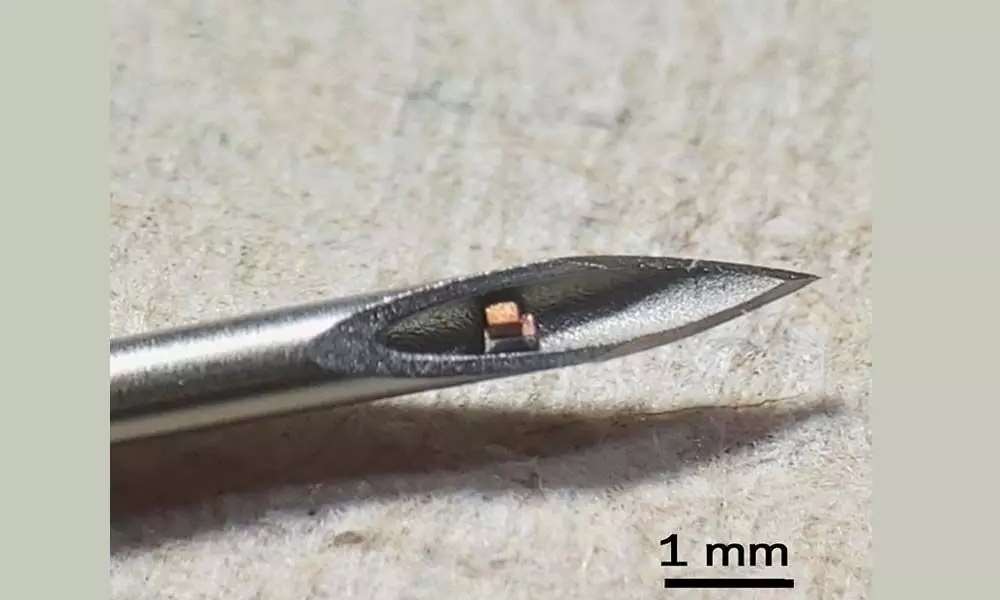Scientists Have Developed The World's Tiniest Implantable Chip

Scientists Have Developed The World's Tiniest Implantable Chip
The world's smallest implantable chip called "motes", has been created by scientists at Columbia University.
The world's smallest implantable chip called "motes", has been created by scientists at Columbia University. This chip system is believed to work on an entirely wireless electronic arrangement that can be used for monitoring human health conditions. Mote is so tiny that the cumulative volume of the entire chip is less than 1mm cube which makes it even smaller than a dust mite.
These chips work on signal transmission through ultrasound and can only be used for communicating with an ultrasound machine. This makes the chip exclusively useful to medical technology and certifies that it can not be used to track an individual.
This microchip can be inserted into a human body with the help of a hypodermic needle and then it can further be regulated from outside to communicate the essential medical conditions of an individual's body. This is the first chip that can be injected directly into the body of a human and then used to retrieve health information. For the time being, the Scientists have only been able to measure body temperature but they are optimistic that they will be able to monitor blood pressure, glucose, respiration, etc. with the chip in the near future.
How it works
Each Mote display three primary characteristics which include:
i)Data transmission which works on wireless technology.
ii)A functional interface that connects the individual to the technology.
iii)A form factor that makes the chip amenable to the human body.
For these qualities to be inserted in the chip, the scientists chose a Complementary Metal Oxide Semiconductor (CMOS). These CMOS chips work on secondary voltage sources that work at opposite times by alternately switching on and off the two transistors. They then added a piezoelectric transducer which enabled the Mote to communicate the received information to an ultrasound machine. This is made possible as the transducer installed can convert ultrasound to electrical signals and electrical signals to ultrasound. Lastly, the chip has two tiny gold layers on each side which help in enhancing connectivity, and a thin layer for copper along with a special film for conductivity.
The chip is coated with a certain type of plastic that increases the biocompatibility of the chip and it has been successfully tested on rats at the laboratories. However, scientists established that trials on humans are still far ahead.
The embeddable microchips, which are often much larger than these motes and are placed just under the surface of the skin in the fingers or hands, have been available for decades. Humans have a long history of implanting microchips into their bodies. These people are known as 'biohackers' or 'grinders' because they seek to employ microchips to enhance their bodies' capacities, such as the capacity to pick up magnetic objects
Shepard said that
It's also worth remembering that these chips communicate with the outside world via RF antenna. Remember that the Columbia chips communicate with an ultrasound machine via a piezoelectric transducer.



















